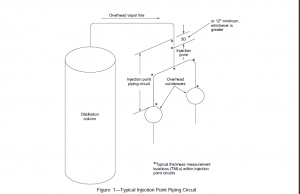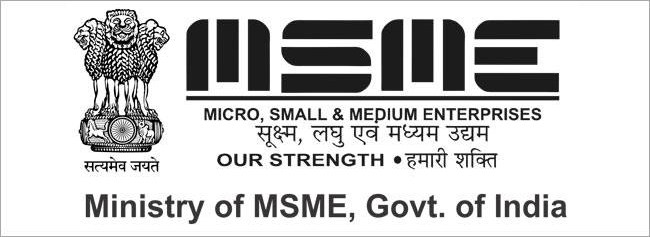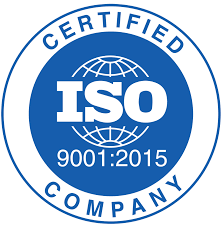RISK BASED INSPECTION
Identifying and evaluating potential degradation mechanisms are important steps in an assessment of the likelihood of a piping failure. However, adjustments to inspection strategy and tactics to account for consequences of a failure should also be considered. Combining the assessment of likelihood of failure and the consequence of failure are essential elements of risk based inspection (RBI). When the owner/user chooses to conduct a risk based inspection RBI assessment it must include a systematic evaluation of both the likelihood of failure and the associated consequence of failure, in accordance with API RP 580 risk-based inspection. The likelihood assessment must be based on all forms of degradation that could reasonably be expected to affect piping circuits in any particular service. Examples of those degradation mechanisms include: internal or external metal loss from an identified form of corrosion (localized or general), all forms of cracking including hydrogen assisted and stress corrosion cracking (from the inside or outside surfaces of piping), and any other forms of metallurgical, corrosion, or mechanical degradation, such as fatigue,embrittlement, creep, etc. Additionally, the effectiveness of the inspection practices, tools, and techniques utilized for finding the expected and potential degradation mechanisms must be evaluated. This likelihood of failure assessment should be repeated each time equipment or process changes are made that could significantly affect degradation rates or cause premature failure of the piping. Other factors that should be considered in a risk based inspection risk based inspection RBI assessment conducted in accordance with API RP 580 include: appropriateness of the materials of construction; piping circuit design conditions, relative to operating conditions; appropriateness of the design codes and standards utilized; effectiveness of corrosion monitoring programs; and the quality of maintenance and inspection Quality Assurance/Quality Control programs. Equipment failure data and information will also be important information for this assessment. The consequence assessment must consider the potential incidents that may occur as a result of fluid release, including explosion, fire, toxic exposure, environmental impact, and other health effects associated with a failure of piping. It is essential that all risk based inspection RBI assessments be thoroughly documented in accordance with API RP 580 risk based inspection, clearly defining all the factors contributing to both the likelihood and consequence of a piping failure.
INSPECTION FOR SPECIFIC TYPES OF CORROSION AND CRACKING
Note: For more thorough and complete information, see API IRE Chapter II. Each owner/user should provide specific attention to the
need for inspection of piping systems that are susceptible to the following specific types and areas of deterioration:
a. Injection points.
b. Deadlegs.
c. Corrosion under insulation (CUI).
d. Soil-to-air (S/A) interfaces.
e. Service specific and localized corrosion.
f. Erosion and corrosion/erosion.
g. Environmental cracking.
h. Corrosion beneath linings and deposits.
i. Fatigue cracking.
j. Creep cracking.
k. Brittle fracture.
l. Freeze damage.
Injection Points
Injection points are sometimes subject to accelerated or localized corrosion from normal or abnormal operating conditions. Those that are may be treated as separate inspection circuits, and these areas need to be inspected thoroughly on a regular schedule.
Deadlegs
The corrosion rate in deadlegs can vary significantly from adjacent active piping.
Corrosion Under Insulation
External inspection of insulated piping systems should include a review of the integrity of the insulation system for conditions that could lead to corrosion under insulation (CUI) and for signs of ongoing CUI.
Insulated Piping Systems Susceptible to CUI
Certain areas and types of piping systems are potentially more susceptible to CUI, including the following:
a. Areas exposed to mist overspray from cooling water
towers.
b. Areas exposed to steam vents.
c. Areas exposed to deluge systems.
d. Areas subject to process spills, ingress of moisture, or acid
vapors.
Common Locations on Piping Systems Susceptible to CUI
The areas of piping systems listed in 5.3.3.1 may have specific locations within them that are more susceptible to CUI, including the following:
a. All penetrations or breaches in the insulation jacketing
systems, such as:
1. Deadlegs (vents, drains, and other similar items).
2. Pipe hangers and other supports.
3. Valves and fittings (irregular insulation surfaces).
4. Bolted-on pipe shoes.
5. Steam tracer tubing penetrations.
b. Termination of insulation at flanges and other piping
components.
c. Damaged or missing insulation jacketing.
Soil-to-Air Interface
Soil-to-air (S/A) interfaces for buried piping without adequate cathodic protection shall be included in scheduled
external piping inspections.



